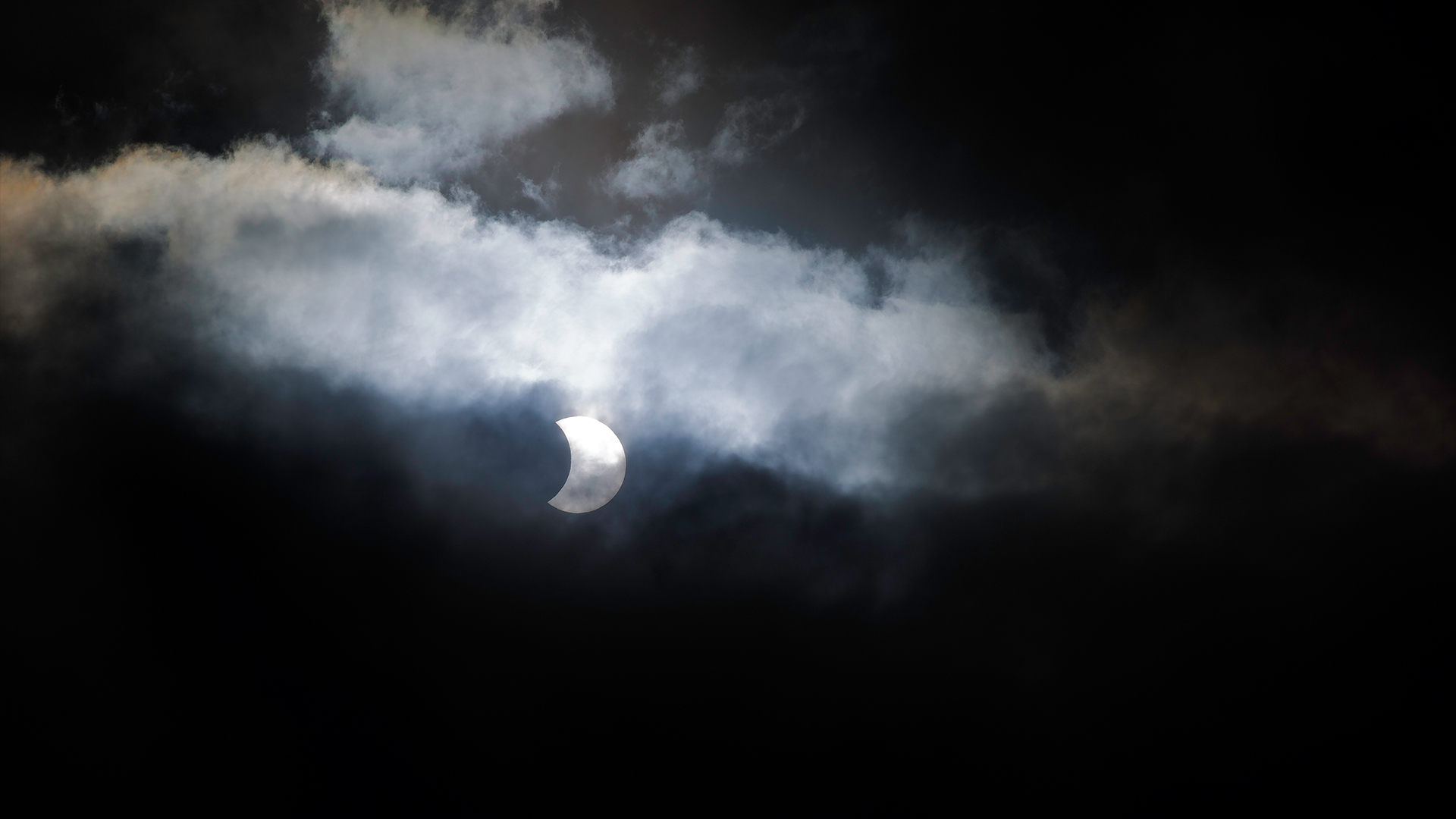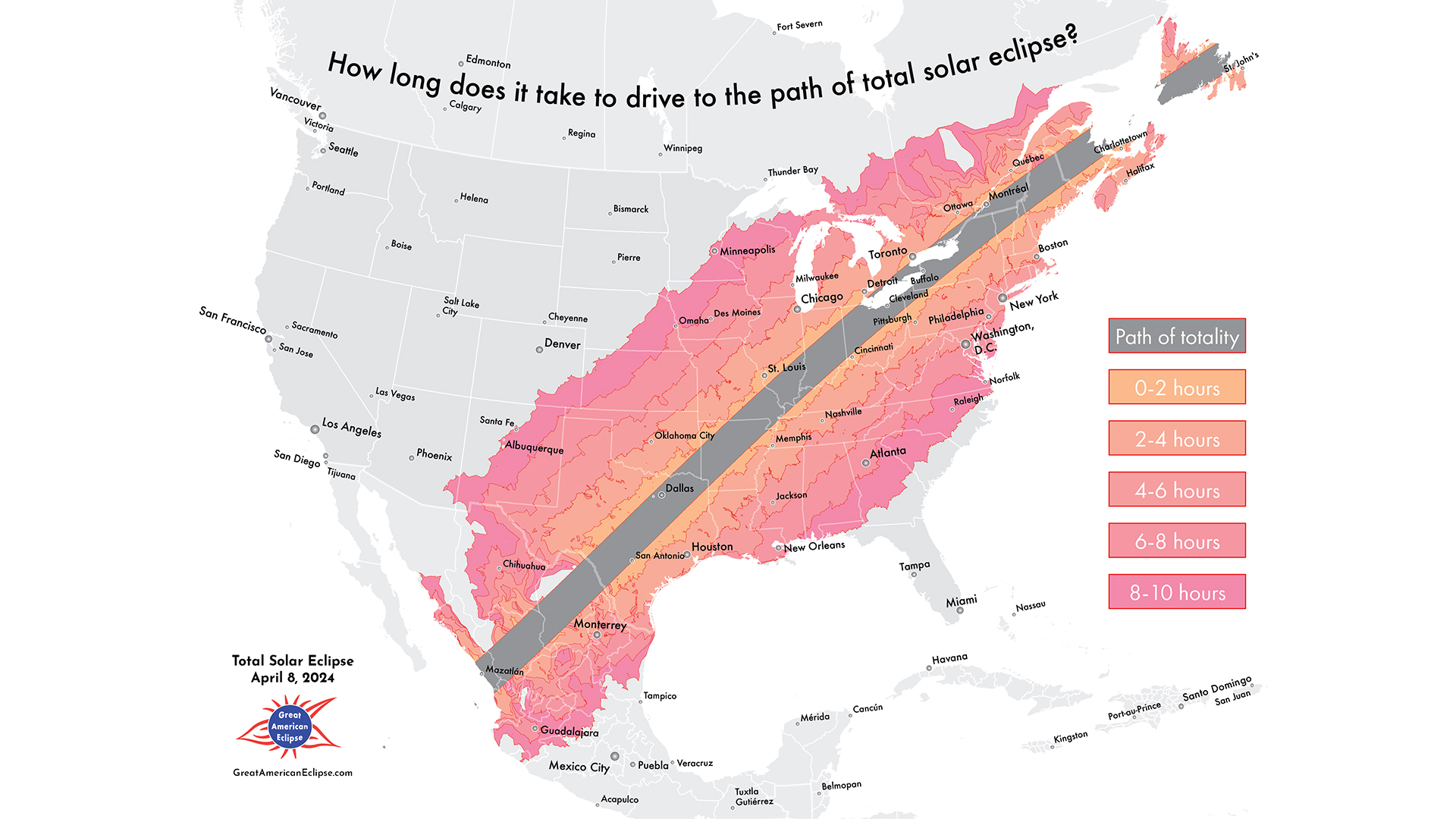Places with the best weather to watch the April 8 solar eclipse (and what happens if it's cloudy where you are)
The total solar eclipse on April 8 will offer an incredible view of the fully obscured sun — but some places along the path of totality may see cloudy weather. Here's how to plan for the best view possible.

Eclipse chasing is as much about cloud avoidance as it is about astronomy. On April 8, those within the 115-mile-wide (185 kilometers) path of totality that stretches from northwest Mexico to southeast Canada will be hoping for clear skies.
The prize is an unobstructed view of an eclipsed sun during totality — the only time it's safe to remove solar eclipse glasses and the only time the sun's spectacular corona can be seen with the naked eye.
The southwestern parts of the path of totality, including in Mexico and Texas, are typically warm this time of the year and have a significantly higher chance of clear skies than the northeastern parts of the path, where the weather is usually colder in April.
However, no place in the path of totality has a guarantee of clear weather that day. "Even along the parts of the path with the best climate, there's still a 1-in-3 chance of having some kind of cloud cover," Jay Anderson, a Canadian meteorologist who publishes studies of the climate along eclipse tracks on Eclipsophile, told Live Science.
Without meaningful weather forecasts until a few days before April 8, all we have to go on is historical cloud-coverage data. According to TheSkyLive, everywhere in the path from Mazatlán, on Mexico's Pacific Coast, to Little Rock, Arkansas, has a 50% chance of a "mostly clear or better" sky. The website highlights the U.S.-Mexico border as statistically the most likely to be clear, with Piedras Negras, Mexico, and Eagle Pass and Uvalde, Texas, reaching 59%.
Related: April 8 total solar eclipse: The best places to stargaze near the path of totality

But none of those numbers guarantee clear skies on April 8. "Start seriously looking at weather forecasts five days out, and make plans three days [before]," Anderson advised. "Look at the forecast the night before, and if it looks better someplace else, then divert, if you can, though there are times when you have to make a decision four hours out."
Sign up for the Live Science daily newsletter now
Get the world’s most fascinating discoveries delivered straight to your inbox.
Most eclipse chasers won't have the luxury to move, whether because of planned events and logistics or bad traffic. But wherever you are in the path of totality, there's always hope for clear skies because of a phenomenon called eclipse cooling.
"Clouds are driven by the sun's heating of the ground, so when the ground cools during the eclipse's partial phases, clouds can dissipate," Anderson said. "It can even go from a 70% cloud cover to 1% in the space of five to 10 minutes."
If that doesn't happen and clouds block your view of the sun's corona, don't despair. The moon's shadow will still cover you, and it will get much darker because of the clouds. Whatever the weather, a total solar eclipse never fails to impress.

Jamie Carter is a freelance journalist and regular Live Science contributor based in Cardiff, U.K. He is the author of A Stargazing Program For Beginners and lectures on astronomy and the natural world. Jamie regularly writes for Space.com, TechRadar.com, Forbes Science, BBC Wildlife magazine and Scientific American, and many others. He edits WhenIsTheNextEclipse.com.










